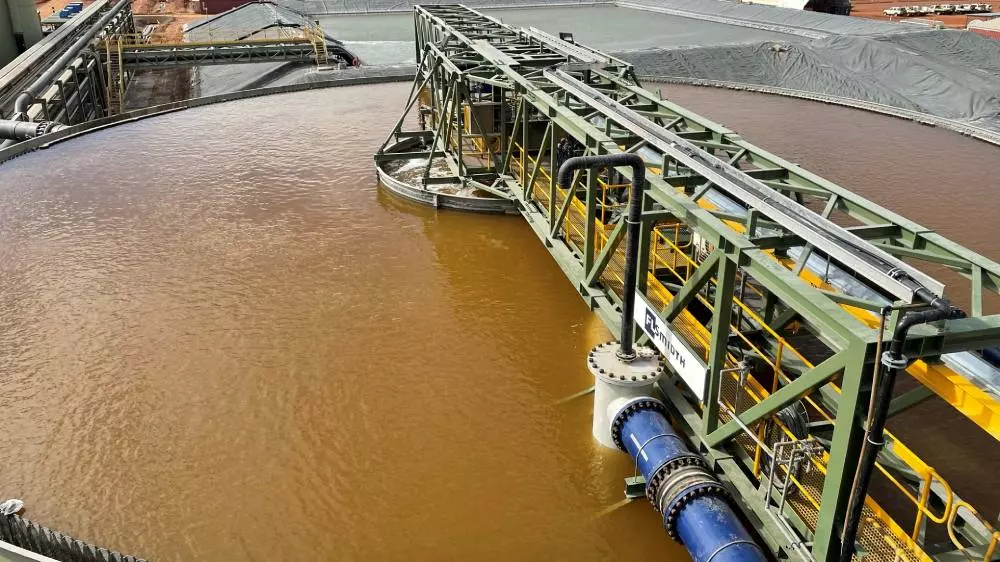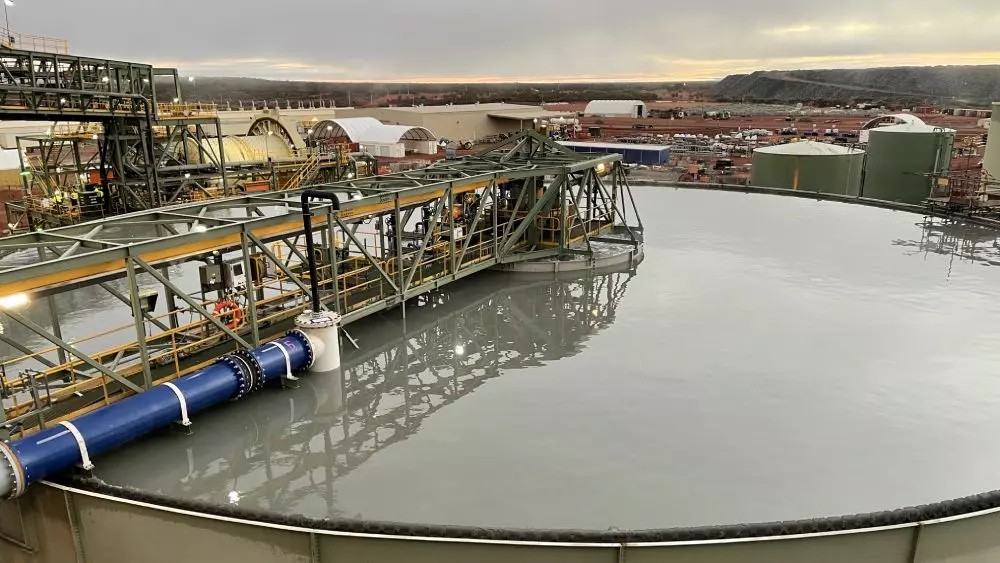Thickeners are a ubiquitous feature at minerals processing facilities and have been for many decades. In an industry where the lifetime of major equipment is often measured in decades, they are also particularly long lived.
FLSmidth – whose association with thickeners goes back more than a century via the Dorr-Oliver and EIMCO brands which it acquired in 2007 – has many systems still operating at Australian mines that were installed in the 1960s, while a couple date back as far as the 1930s and 1940s.
In addition to its role in the production of target minerals, thickeners play an important part in mine water management and recycling: areas of focus in today’s mining industry where sustainability is becoming an ever more pressing day-to-day concern.
This is particularly true of mines in regions of high-water stress, which is how the World Resources Institute categorises most of Australia.
“At FLSmidth, we combine years of engineering expertise to offer a complete service package – from equipment and process evaluation to tailored upgrades, including complete new mechanisms, feed systems and new drives.”
FLSmidth’s experience and technology range is comprehensive, including the world’s largest and highest-capacity bridge and column-mounted thickeners.
Not keen to rest on its laurels, however, the company is always looking forward. Its research and development model integrates the evaluation of new technologies and concepts with continuous review and update of existing products.
Among the latest developments in thickener technology offered by FLSmidth are its E-Volute™ feedwell and E-DUC® and P-DUC feed dilution systems.
“The E-Volute™ feedwell is the result of many years of development work, including CFD modelling, at the laboratory and pilot scale,” FLSmidth global product line manager for thickening Fred Schoenbrunn said.

“The result is an involute design with sloped tapering shelf and sloped inner shelf, which promote superior energy dissipation in the feed stream, optimal mixing and improved shear profiles to ensure thickener performance and efficiency.”
According to Schoenbrunn, the enhanced design provides a range of benefits including:
- Increased retention time in the feedwell
- Maximised solids throughput
- Reduced shear rates and minimised flocculant consumption
- Increased flocculation efficiency
- Even distribution of feed slurry/solids
- Enhanced settling rates and increased equipment capacity
- Optimised underflow solids
- Minimised short circuiting
- Reduced overflow solids
Supporting the work of the E-Volute™ feedwell are the E-DUC® and P-DUC feed dilution systems, both of which are designed to ensure even distribution of flocculated solids in the feed before it reaches the E-Volute feedwell.
“The E-DUC® system is appropriate for applications that require consistently large volumes of feed dilution, whereas the P-DUC system incorporates a variable speed drive that allows for variable dilution flowrates in applications where large variations in feed flow or density are expected,” Schoenbrunn said.
Case study: Feed system retrofit at an Australian gold operation
FLSmidth has supported thickener performance upgrade at one of Australia’s largest gold mines for several years now.
When the mine first approached the engineering company, it was operating third-party 34-metre diameter leach feed and 44-metre diameter tailings thickeners, and nameplate capacity was 700 tonnes per hour (tph).

“We initially upgraded the leach feed thickener, installing an E-DUC® dilution system and E-Volute feedwell,” FLSmidth regional product line manager for dewatering Anson Gilbert said.
“This increased leach feed thickener underflow density from 48 per cent to 54 per cent solids at 850 tph of feed solids, resulting in significant savings in both lime and cyanide consumption, as well as increasing carbon in leach (CIL) residence times.
Flocculant consumption also fell by 34 per cent on a gram/tonne basis. Return on investment was achieved in less than six months.”
Discover more about the initial optimisation project here.
The mine successfully operated with this upgraded set-up for several years. Over time, however, the thickener started to bottleneck the process, and the mine again approached FLSmidth to help.
“The mine’s proposal was to swap the duties of the 34-metre leach feed thickener and 44-metre tailings thickener,” Gilbert said.
“When we were called in, we set about analysing the idea with a comprehensive program of onsite test work, process evaluation and structural analysis of both thickener bridges.”
Through this work, the FLSmidth team observed continuous pluming in the leach feed thickener in proximity to the overflow launders – with solid particles in the overflow visible at elevated throughputs – while faster settling rates and compaction times were seen in the tailings thickener.
“We were therefore able to prove the viability of swapping thickener duties to unlock additional thickener capacity,” Gilbert said.
“The faster settling tailings material could be treated in the smaller thickener, meaning the additional unit area required for the leach feed application could be obtained by using the larger thickener.”
FLSmidth recommended installing P-DUC mechanisms on both thickeners and an E-Volute™ feedwell on the 44-metre thickener.
The engineering team also recommended a larger feed box to allow for increased throughput and improved deaeration of the feed.
As a result of the upgrade, thickener throughput has increased from 1060 tph to 1160 tph, without any increase in flocculant consumption on a gram/tonne basis.
There is also now no visible pluming or particle carryover in either of the thickeners overflow.
“Thickeners are no longer the bottleneck to performance. By increasing throughput and maintaining the same fixed costs, we also enhanced profitability, and payback has been achieved in under 12 months,” Gilbert said.

The value of thickener upgrades
“The retrofit demonstrates the potential improvements that a thickener upgrade can bring to an operation,” David Williams said.
“In both units, we achieved a large improvement in solid-liquid separation, which facilitated a further flowsheet change and removed a customer pain point.”
Overall, the upgrade resulted in a 9 per cent increase in plant capacity – allowing for reduced fixed cost per ounce.
This project also demonstrates the mutual benefits thickener upgrades can bring to a mine’s profitability and environmental performance. Specific sustainability wins included:
- Increasing the underflow density from the leach feed thickener allows for additional residence time in the CIL circuit, improving recovery at a given throughput. This increases the production of gold without increasing the amount of ore mined.
- The underflow water ratio in the tailings thickener dropped from 0.85 tonnes water to 0.75 tonnes water per tonne of solids processed – an 11 per cent reduction in water going to the tailings dam (even with the higher tonnage).
“As sustainability becomes an ever-important element in the performance of minerals processing operations, we believe the value of such projects will become increasingly important, as mining companies seek to meet both financial and environmental goals.
“We are committed to supporting the industry on this journey and, through our MissionZero program, are working with our customers and other partners to build a truly sustainable mining industry.”
Get in touch
